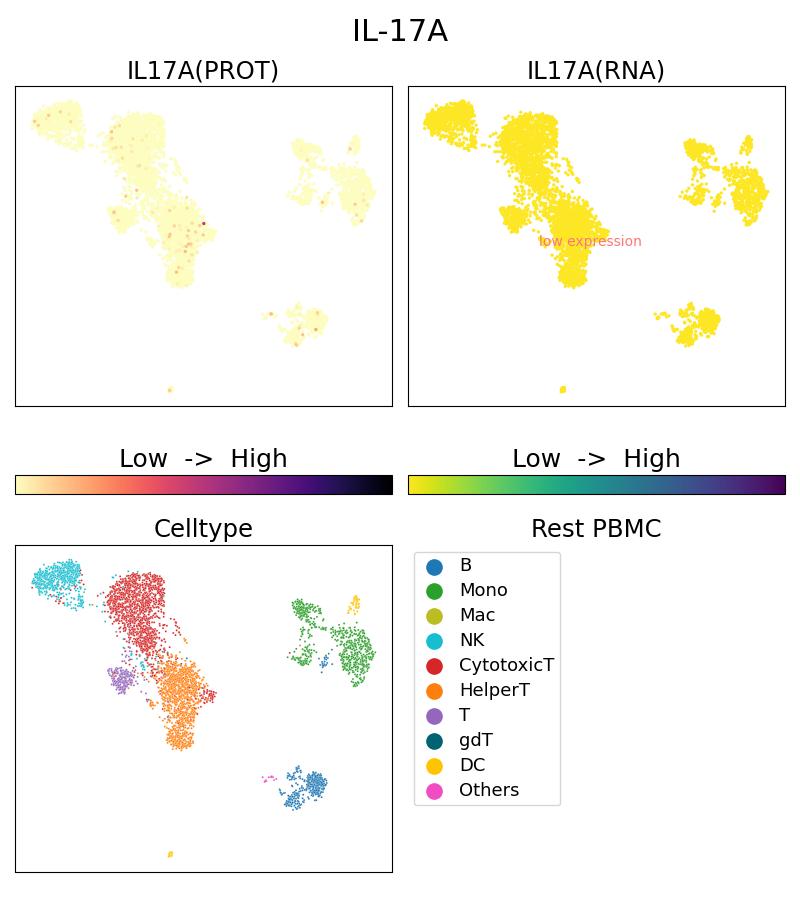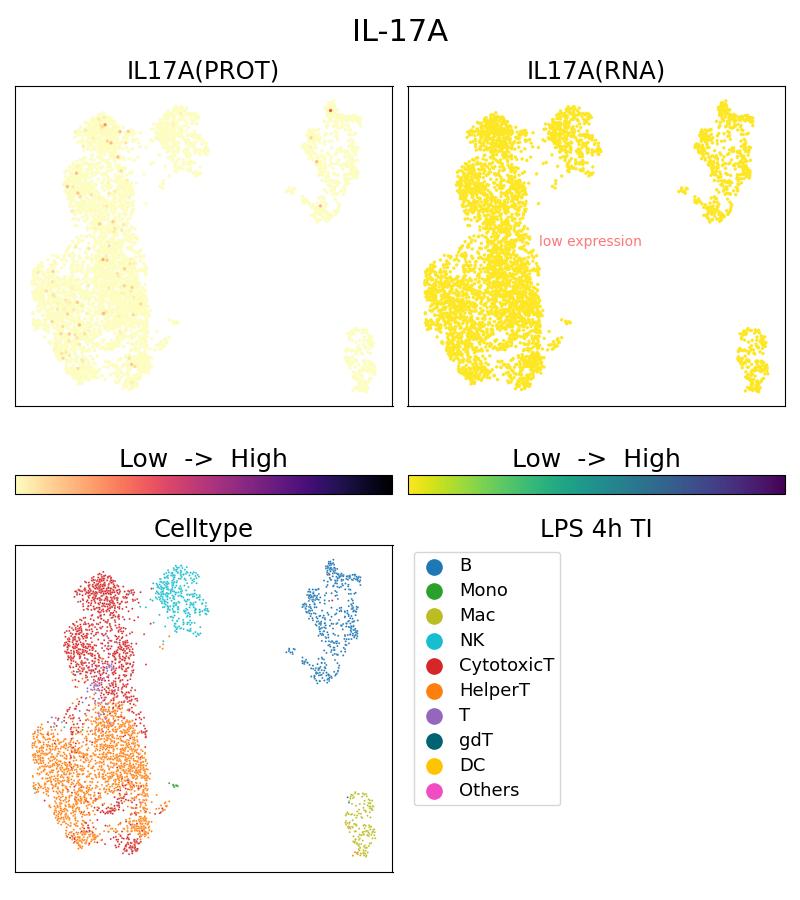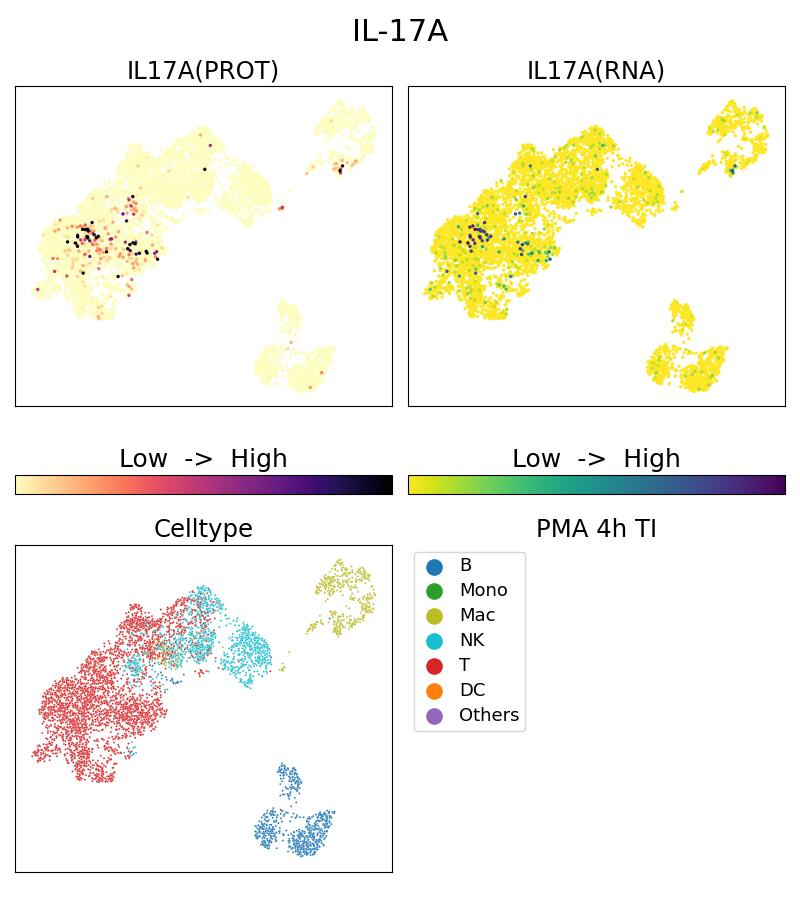NeutraKine® IL-17A Monoklonaler Antikörper
NeutraKine® IL-17A Monoklonal Antikörper für Single Cell (Intra)
Wirt / Isotyp
Maus / IgG1
Getestete Reaktivität
human
Anwendung
Single Cell (Intra)
Konjugation
5CFLX Fluorescent Dye
CloneNo.
1F3E3
Kat-Nr. : G69021-1-5C
Synonyme
Geprüfte Anwendungen
| Erfolgreiche Detektion in Single Cell (Intra) | 10x Genomics Gene Expression Flex with Feature Barcodes and Multiplexing product |
Empfohlene Verdünnung
| Anwendung | Verdünnung |
|---|---|
| SINGLE CELL (INTRA) | SINGLE CELL (INTRA) : <0.5ug/test |
| It is recommended that this reagent should be titrated in each testing system to obtain optimal results. | |
| Sample-dependent, check data in validation data gallery | |
Produktinformation
G69021-1-5C bindet in Single Cell (Intra) NeutraKine® IL-17A und zeigt Reaktivität mit human
| Getestete Reaktivität | human |
| Wirt / Isotyp | Maus / IgG1 |
| Klonalität | Monoklonal |
| Typ | Antikörper |
| Immunogen | NeutraKine® IL-17A fusion protein HZ-1113 |
| Vollständiger Name | interleukin 17A |
| Gene symbol | IL-17A |
| Gene ID (NCBI) | 3605 |
| Konjugation | 5CFLX Fluorescent Dye |
| Form | Liquid |
| Reinigungsmethode | |
| Lagerungspuffer | PBS with 1mM EDTA and 0.09% sodium azide |
| Lagerungsbedingungen | 2-8°C Stable for one year after shipment. 20ul Größen enthalten 0,1% BSA. |
Hintergrundinformationen
IL17A, also named as IL-17, is a proinflammatory cytokine. IL-17, synthesized only by memory T cells and natural killer cells, has pleiotropic effects, mainly in the recruitment and activation of neutrophils. This cytokine regulates the activities of NF-kappaB and mitogen-activated protein kinases. This cytokine can stimulate the expression of IL6 and cyclooxygenase-2 (PTGS2/COX-2), as well as enhance the production of nitric oxide (NO). High levels of this cytokine are associated with several chronic inflammatory diseases including rheumatoid arthritis, psoriasis and multiple sclerosis. The IL-17 receptor is a type I transmembrane protein, that is widely expressed on epithelial cells, fibroblasts, B and T cells, and monocytic cells. In psoriatic skin lesions, both Th17 cells and their downstream effector molecules, e.g. IL-17 and IL-22, are highly increased.
This antibody can be used to neutralize the bioactivity of IL-17A.




